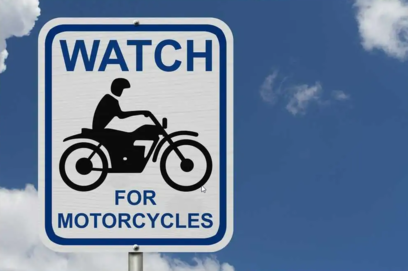
May is Motorcycle Safety Awareness Month, and the U.S. Department of Transportation’s National Highway Traffic Safety Administration (NHTSA) reminds drivers that safe driving and riding practices, and cooperation from all road users will help reduce the number of fatalities and injuries on our nation’s highways.
Know the Facts
In 2020, there were 5,579 motorcyclists killed in traffic crashes, an 11% increase from 2019 (5,044). In contrast, an estimated 82,528 motorcyclists were injured, a 2% decrease from 83,814 motorcyclists injured in 2019.
Motorcyclist deaths accounted for 14% of the total highway fatalities that year.
Research shows that motorcyclists are significantly overrepresented in traffic crashes and fatalities each year.
In fact, in 2020, per vehicle mile traveled, motorcyclists were about 28 times more likely than passenger vehicle occupants to die in a motor vehicle crash and were 4 times more likely to be injured.
In 2011 and 2020, roughly half the motorcyclists were killed in traffic crashes during the weekend versus weekday. Additionally, motorcyclist fatalities on weekdays have increased by 15% from 2,402 in 2011 to 2,765 in 2020.
Tips for Motorists
Allow a motorcyclist a full lane width. Though it may seem as if there is enough room in a single lane for a motor vehicle and a motorcycle, looks can be deceiving. Share the road, but not the lane: a motorcyclist needs room to maneuver safely.
Size also counts against motorcycles when it comes to blind spots. Motorcyclists can be easily hidden in a vehicle’s blind spot. Always look for motorcycles by checking your mirrors and blind spots before switching to another lane of traffic.
Improper use of a vehicle’s rear-view and side-view mirrors contributes to collisions, particularly with smaller vehicles like motorcycles. With roughly 40% of a vehicle’s outer perimeter zones hidden by blind spots, improper adjustment, or lack of use of one’s side-view mirrors, can have dire consequences for motorcyclists.
Allow more follow distance — 3 or 4 seconds — when following a motorcycle; this gives the motorcycle rider more time to maneuver or stop in an emergency. Motorcycle riders may suddenly need to change speed or adjust their lane position to avoid hazards such as potholes, gravel, wet or slippery surfaces, pavement seams, railroad crossings, and grooved pavement.
NHTSA-funded research has shown that people behind the wheels of passenger vehicles are distracted more than 50% of the time.
|